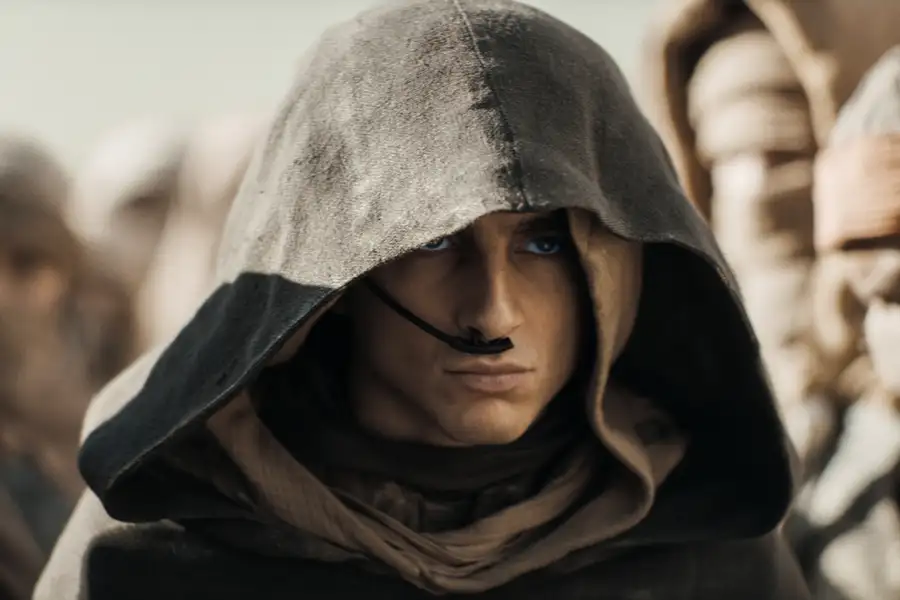Watching Denis Villeneuve’s Dune Part 2 for New Scientist, 23 February 2024
So here’s where we’re at, in the concluding half of Denis Villeneuve’s adaptation of Dune:
Cast into the wilderness of planet Arrakis by invading House Harkonnen, young Paul Atreides (Timothee Chalamet) learns the ways of the desert, embraces his genetic and political destiny, and becomes in one swoop a focus for fanaticism and (with an eye to a third film, an adaptation of author Frank Herbert’s sequel, Dune Messiah) the scourge of the Universe.
From Alejandro Jodorowosky’s mid-1970s effort, which never bore fruit (but at least gave Swiss artist H.R. Giger his entrée into movies and, ultimately, Alien), and from David Lynch’s more-than-four-hour farrago, savagely edited prior to its 1984 release into something approaching (but only approaching) coherence, many assumed that Dune is an epic too vast to be easily filmed. Throw resources at it, goes the logic, and it will eventually crumble to your will.
That this is precisely the wrong lesson to draw was perfectly demonstrated by John Harrison’s 2000 miniseries for the Sci Fi Channel and its sequel, Children of Dune (2003) — both absurdly under-resourced, but both offering satisfying stories that the fans lapped up, even if the critics didn’t.
Now we have Villeneuve’s effort, and like his Blade Runner 2049, it uses visual stimulation to hide the gaping holes in its plot.
Yes, the story of Dune is epic. But it is also, in the full meaning of the word, weird. It’s about a human empire that’s achieved cosmic scale, and all without the help of computers, destroyed long ago in some shadowy “Butlerian Jihad”. In doing so it has bred, drugged and otherwise warped individual humans into becoming something very like Gods. In conquering space, humanity teeters on the brink of attaining power over time. The “spice” mined on planet Arrakis is not just a rare resource over which great houses fight, but the spiritual gateway that makes humanity, in this far future, viable in the first place.
Leave these elements undeveloped (or, as here, entirely ignored) and you’re left with an awful lot of desert to fill with battles, sword play, explosions, crowd scenes, and sandworms — and here an as yet unwritten rule of SFX cinematography comes into play, because I swear the more these wrigglers cost, the sillier they get. (If that’s the sandworm’s front end on those posters, I shudder to think what the back end looks like.) Your ears will ring, your heart will thunder, and by morning the entire experience will have evaporated, like a long (2-hour 46-minute) fever dream.
As Beast Raban, Dave Bautista outperforms the rest of the cast to a degree that is embarrassing. The Beast’s an Harkonnen, an alpha predator in this grim universe, and yet Bautista is the only actor here capable of portraying fear. Javier Bardem’s desert leader Stilgar is played for laughs (but let’s face it, in the entire history of cinema, name one desert leader that hasn’t been). Timothee Chalamet stands still in front of the camera. His love interest, played by Zendaya, scowls and growls like Bert Lahr’s Cowardly Lion in the Wizard of Oz.
Dune Part Two is an expensive (USD 190 million) film which has had the decency to put much of its budget in front of the camera. This makes it watchable, enjoyable, and at times even thrilling. Making a good Dune movie, though, requires a certain eccentricity. Villeneuve is that deadening thing, “a safe pair of hands”.

